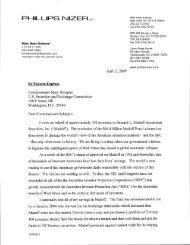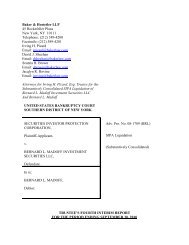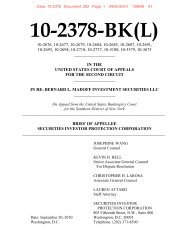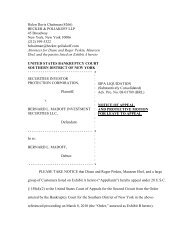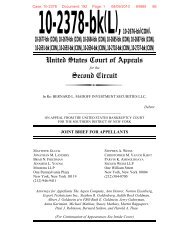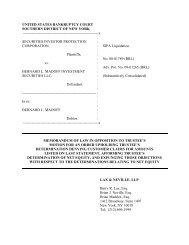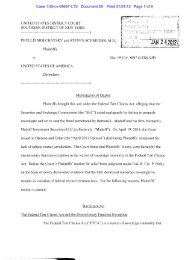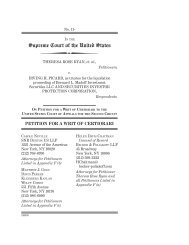Davis Polk & Wardwell LLP 450 Lexington Avenue New York, New ...
Davis Polk & Wardwell LLP 450 Lexington Avenue New York, New ...
Davis Polk & Wardwell LLP 450 Lexington Avenue New York, New ...
You also want an ePaper? Increase the reach of your titles
YUMPU automatically turns print PDFs into web optimized ePapers that Google loves.
ed. 1940)). Fraudulent transfer law is instead “a set of legal (not equitable) doctrines<br />
designed for very different purposes.” Id. at 1508. The Supreme Court has thus observed<br />
that fraudulent transfer actions “more nearly resemble state-law contract claims brought<br />
by a bankrupt corporation to augment the bankruptcy estate than they do creditors’<br />
hierarchically ordered claims to a pro rata share of the bankruptcy res.” Granfinanciera,<br />
S.A. v. Nordberg, 492 U.S. 33, 56 (1989). 20<br />
The Second Circuit has expressly held that a transfer on account of antecedent<br />
debt is not a fraudulent transfer, regardless of the mental state or intent of the transferor.<br />
In In re Sharp International Corp., 403 F.3d 43 (2d Cir. 2005), a lender began to suspect<br />
Sharp of fraud, and demanded that Sharp repay its loan. Sharp fraudulently induced<br />
investments from unsuspecting investors, some of which were then used to repay the debt<br />
to Sharp. Id. at 47-48. The Second Circuit ruled that Sharp’s payment to State Street<br />
constituted a preference, but not a fraudulent conveyance. A “‘conveyance which<br />
satisfies an antecedent debt made while the debtor is insolvent is neither fraudulent nor<br />
otherwise improper, even if its effect is to prefer one creditor over another.’” Id. at 54<br />
(quoting Ultramar Energy, Ltd. v. Chase Manhattan Bank, N.A., 191 A.D.2d 86, 90-91,<br />
599 N.Y.S.2d 816 (1st Dep’t 1993)).<br />
That Sharp defrauded new investors to raise money to pay State Street – even if<br />
State Street knew about that fraud – did not change the fact that the transfer to State<br />
20 Fraudulent transfer laws have specific statutes of limitation – two years under federal law, and<br />
six years under <strong>New</strong> <strong>York</strong> law – that restrict the period during which transfers may be avoided. Even if any<br />
avoidance provision were applicable to the Transfers, it would permit avoidance only within the relevant<br />
period. The customer’s account statement immediately preceding that period would reflect the customer’s<br />
equity at the start of the period. The Trustee’s “cash-in/cash-out” approach ignores these temporal<br />
limitations on his avoidance power.<br />
23



